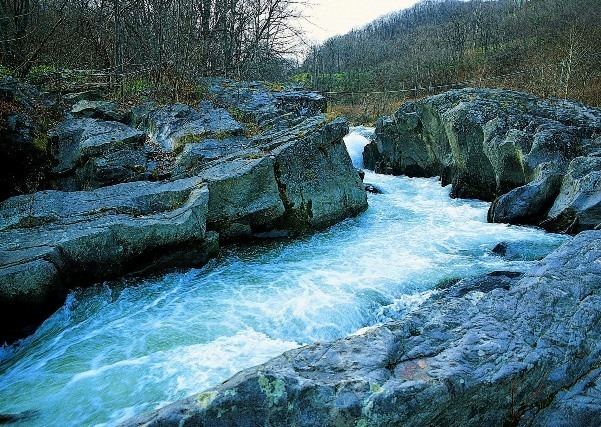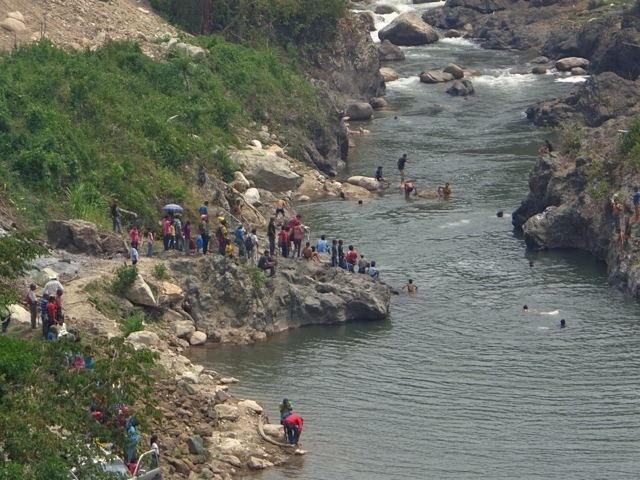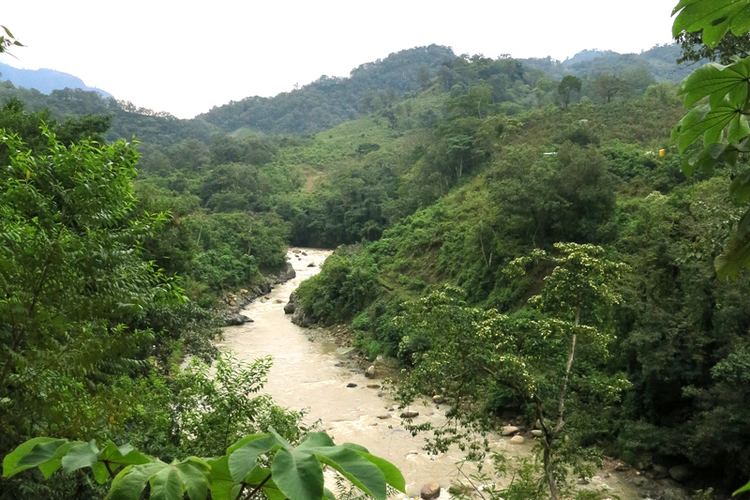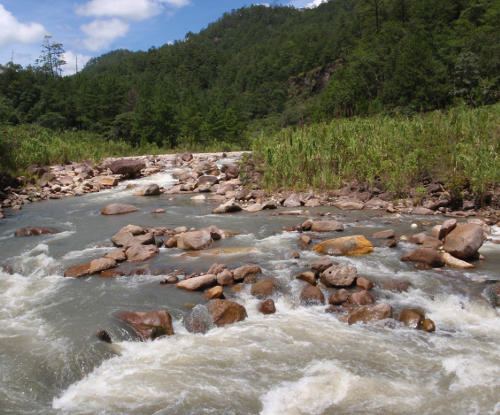Country Honduras | River mouth Río Grande de Otoro | |
 | ||
Main source Reserva Biológica Opalaca | ||
R o gualcarque homenaje a berta c ceres
The Río Gualcarque is a river in Intibucá, Western Honduras. It is sacred to the indigenous Lenca people, who depend on the river for their subsistence. Since 2006, Sinohydro, the World Bank's International Finance Corporation, and Honduran company Desarrollos Energéticos (DESA) have made preparations for four hydroelectric dams without consulting the Lenca, including the Agua Zarca dam. Construction began in 2012, and in 2013 river access was blocked, after which the Lenca started to protest. They have been met with violence, detention and torture.
Contents

In March 2013 during a peaceful protest at the dam office, Tomas Garcia was shot and killed, and in March 2016 Berta Cáceres, an internationally known Lenca woman who had organized the defense of the Gualcarque River, was shot and killed. It is the site of the proposed Agua Zarca hydroelectric dam, a joint Honduran-Chinese project. In March 2016 Berta Cáceres, an internationally known indigenous activist who was a leader of the opposition to the dam, was shot and killed.

Geography

The Gualcarque originates in the Reserva Biológica Opalaca in Intibucá flowing Eastward for 2.4 miles to the reserve's border, where it is crossed by the only road in its entire course, the V-608. It then turns to the North flowing through the entire length of the Reserva de Vida Silvestre Montaña Verde at its Eastern border and upon exiting it discharges into the Río Grande de Otoro.

The river is considered sacred to one of the communities of indigenous Lenca people who live near it. It provides drinking water, is used to fish, irrigate fields, and is used for washing. Berta Cáceres has stated: "In our worldviews, we are beings who come from the Earth, from the water and from corn. The Lenca people are ancestral guardians of the rivers, in turn protected by the spirits of young girls, who teach us that giving our lives in various ways for the protection of the rivers is giving our lives for the well-being of humanity and of this planet."

The Río Gualcarque belongs to the geothermal sites in Northwest Honduras, the Azacualpa thermal springs, surrounding the Yojoa Lake, which is affected by a rough E–W extensional tectonics and by Holocene magmatism.((cn)) The river emerges from a NNW–SSE normal fault system just southwest of the Yojoa Lake. Water sampled at Río Gualcarque had the lowest measured temperature at 52.5 °C and the lowest salinity in the whole Azacualpa area, where thermal springs abound.
Development

Since 2006 the Chinese company Sinohydro, the World Bank's International Finance Corporation (IFC), and Honduran company Desarrollos Energéticos S.A. (DESA) have been planning to construct a small run-of-the-river hydroelectric station that would require that a weir be built on the river, although it would not require a dam or create any reservoir. When construction machinery arrived in 2006, community members of Rio Blanco asked the National Council of Popular and Indigenous Organizations of Honduras (COPINH) for help; The Lenca have said that the project would "jeopardize their water resource and livelihood" and that they have not been consulted about the project, per international law. Together with Berta Cáceres they organized a local assembly which formally voted against the project, filed complaints with government authorities in Tegucigalpa, organized and conducted protests against the project, and brought the case to the Inter-American Human Rights Commission.
In 2012, DESA started construction on the land it had acquired, destroying corn and bean fields, fruit trees and coffee plantations. At the end of March 2013 DESA security officers blocked access to the river, and affected communities started a street blockade. Protesters were "attacked with machetes, discredited, detained, and tortured", and a leader from Rio Blanco named Tomas Garcia was shot and killed during a peaceful protest. In late 2013, Sinohydro terminated its contract with DESA, the IFC, concerned about human rights violations, withdrew its funding. In March 2016, Berta Caceres was shot in her home and killed as well.
